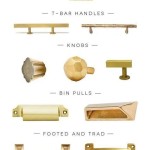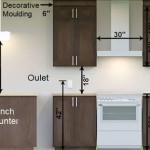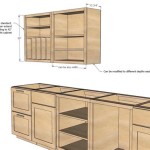How to Raise Upper Kitchen Cabinets
Raising upper kitchen cabinets is a common home improvement project with the potential to completely transform the look and feel of a kitchen. It can add a modern touch and create a more spacious and airy feel. This guide will outline the steps involved in raising upper kitchen cabinets, providing a comprehensive understanding of the process and the factors to consider.
Understanding the Benefits of Raising Upper Cabinets
There are several benefits to raising upper cabinets in the kitchen:
- Enhanced Space and Light: Raising the cabinets creates more vertical space, making the ceiling appear higher. This, in turn, allows for more natural light to enter the room, making it feel larger and brighter.
- Modern Aesthetics: Higher cabinets add a modern touch to the kitchen. The increased space above the cabinets allows for the inclusion of decorative elements such as pendant lighting, open shelves, or artwork.
- Improved Functionality: Raising cabinets can improve accessibility to items stored inside. It can also facilitate a more efficient workflow in the kitchen.
Factors to Consider Before Raising Cabinets
Before embarking on this project, several factors need careful consideration:
- Ceiling Height: The height of your ceiling is a crucial factor. Raising the cabinets can only be done if there is sufficient space between the top of the cabinets and the ceiling. A minimum of 12 inches is generally recommended for comfortable access and to avoid a cramped feeling.
- Cabinet Construction: The construction of your cabinets, particularly the material and the mounting method, should be assessed. Some cabinets are designed for specific mounting heights and may not be suitable for raising.
- Existing Appliances and Features: Check if the placement of your appliances or other features, such as range hoods or ventilation systems, will be affected by the height change.
- Budget and Time: Raising upper cabinets requires labor and materials. Assess the cost of the project. Consider the time it will take to complete the job.
Steps for Raising Upper Kitchen Cabinets
Raising upper kitchen cabinets is a complex process that requires expertise. It’s strongly advisable to consult with a professional contractor or kitchen designer for guidance, especially if you are unfamiliar with the process. However, a basic understanding of the steps involved can be helpful:
- Preparation: Begin by clearing out the cabinets of all items. Remove all doors and drawers.
- Assessment: Carefully assess the existing cabinet construction, the type of mounting used, and the suitability of the cabinets for raising.
- Planning and Measurement: Determine the desired height for the raised cabinets, considering the ceiling height and the desired look. Precise measurements are essential for ensuring a proper fit.
- Modifying Cabinets: If necessary, modify the cabinets to accommodate the increased height. This may involve adjusting the cabinet box, the doors, or the hardware.
- Adjusting the Mounting: The existing mounting system for the upper cabinets will need to be adjusted to support the new height. This may involve using shims, extending the mounting brackets, or replacing the existing system entirely.
- Reinstallation: Reinstall the cabinets at the new height. This step requires precision and attention to detail to ensure the cabinets are properly aligned and secure.
- Finishing Touches: After installation, complete the finishing touches, including reinstalling the doors and drawers, adjusting the hardware, and cleaning up the area.
Raising upper kitchen cabinets can be a challenging but rewarding project. By following the outlined steps, you can potentially enhance the look and functionality of your kitchen while adding a modern touch. Remember to consult with professionals for guidance and to ensure a successful outcome.

Genius Diy Raising Kitchen Cabinets And Adding An Open Shelf The Crazy Craft Lady

Raised Kitchen Cabinet Makeover Sawdust 2 Stitches

Raised Kitchen Cabinet Makeover Sawdust 2 Stitches

How To Raise Your Kitchen Cabinets The Ceiling Wildfire Interiors

How To Raise Your Kitchen Cabinets The Ceiling Wildfire Interiors

How To Raise Your Kitchen Cabinets The Ceiling Wildfire Interiors

How To Raise Your Kitchen Cabinets The Ceiling Wildfire Interiors

How To Raise Your Kitchen Cabinets The Ceiling Wildfire Interiors

Raised Upper Kitchen Cabinets

Extending Kitchen Cabinets To Ceiling American Wood Reface
Related Posts








